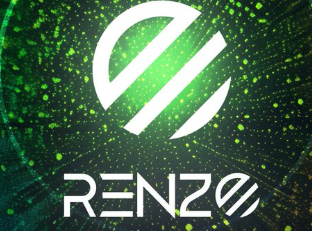
Renzo is the Strategy Manager for EigenLayer and Symbiotic, and a provider of liquid re-staking tokens. As a senior blockchain technology expert, Renzo is committed to enhancing the value of the EigenLayer and Symbiotic ecosystems through $ezETH and $pzETH. These two tokens not only act as an interface to the ecosystem, but also ensure active validation services through re-staking and provide higher returns than traditional ETH staking.
Uniqueness of the Renzo Protocol
The Renzo Protocol abstracts all complexity away from the end user, so that users no longer need to worry about the following issues:
1. Node Operation: Setting up and operating hardware to meet the standards set by the Active Validation Service (AVS).
2. Strategy Management: Selecting which AVS can achieve the best risk-reward.
3. Smart Contract Interface: Interacting with on-chain smart contracts to correctly re-stake.
Renzo is a strong advocate for permissionless innovation on Ethereum and programmatically earning trust for the ecosystem. Renzo was founded to promote widespread adoption of these technologies and platforms that promote them, such as EigenLayer and Symbiotic.
Understanding EigenLayer’s Features
EigenLayer enables innovators to easily collaborate with Ethereum’s stakers and node operators. It promotes open innovation by providing a simple way to leverage Ethereum’s “decentralized trust” module. This eliminates the need for protocols to develop validator sets and allows them to easily access Ethereum’s computational and financial resources.
Four main components of the EigenLayer ecosystem
1. Active Verification Services (AVS): AVS in EigenLayer are decentralized services that will inherit Ethereum’s security through EigenLayer. These services can support a variety of networks such as sidechains, data layers, etc. EigenLayer enhances security by using Ethereum’s pooled resources to perform activities such as middleware services, block construction, and transaction ordering, opening the door to innovation in areas such as MEV and PBS.
2. Ethereum stakers: Ethereum stakers in EigenLayer can secure multiple networks by re-staking ETH. This means they can use existing capital to support multiple networks through smart contracts. While this provides additional returns, it also carries the risk of being slashed if the staker fails to meet the conditions set by the services they choose to support.
3. Node operators: Node operators in EigenLayer provide computing resources to securely run a variety of services, including decentralized applications (DAs), oracles, and bridges. These operators are free to choose the services they serve and implement the recommendations provided by AVS.
4. EigenLayer protocol: The EigenLayer protocol consists of Ethereum smart contracts that facilitate trustless collaboration between stakers, node operators, and services. These contracts allow users to re-stake assets, delegate them to node operators, and interact with on-chain service modules. Service modules have preset reward and slashing conditions to ensure smooth interaction between operators and services.
Renzo's operational nodes
Renzo operational nodes are professional staking providers that ensure the security of protocol users' funds and the correctness of re-staking operations. The protocol distributes pooled LST among all active node operators based on the weight associated with each operator. In this way, a deterministic risk/reward can be set to achieve the best return based on the calculated risk.
Actively verified services
Several protocols have expressed interest in joining the EigenLayer AVS ecosystem. Here are some notable AVS:
1. EigenDA: Developed by EigenLabs, it focuses on ultra-large-scale data availability at any execution layer. EigenDA is designed to scale with each added node, which helps reduce the overall load on EigenLayer Node operators. Notable EigenDA adopters include Celo, Mantle, Fluent, etc.
2. Espresso Systems: Creates a shared sorter to achieve rollup decentralization, improve interoperability, and a scalable DA layer. Espresso captures value through cross-rollup MEV. The project is backed by Ben Fisch of Yale University and investors such as Greylock and Sequoia.
3.Lagrange: Known for ZK-driven cross-chain messaging using state committees, leveraging EigenLayer re-staking to dynamically scale state proof security.
4.Omni Network: L1 built with Cosmos SDK for cross-rollup messaging. It offers cheaper transaction fees and fast finality. They are backed by a Harvard-born team and investors such as Pantera.
5.Blockless: Provides ZK-verifiable serverless functions to optimize decentralized applications. It uses EigenLayer to ensure transaction consensus.
6.Hyperlane: Adopts EigenLayer to protect messages from inter-chain application developers on Ethereum through the economic security of re-staking.
Re-staking Points
Re-staking points are a measure of your contribution to the shared security of the EigenLayer ecosystem. They are a measure of staking participation, equal to the amount of staked accumulated over time. Users who stake 1 ETH for 1 hour receive 1 re-staking point. Renzo will return 100% of the re-staking points earned from user deposits.
Understanding Symbiotic
Symbiotic is a shared security protocol that supports permissionless re-staking. $pzETH is the gateway for Renzo users to enter the Symbiotic ecosystem. Symbiotic ensures the security of the network by re-staking tokens and provides a higher rate of return.
Through Renzo, users can easily participate in the EigenLayer and Symbiotic ecosystems and enjoy higher returns and a safer staking experience. Renzo's strategy and technological innovation not only simplifies the user's operation process, but also brings more possibilities and development space to the entire Ethereum ecosystem.
The emergence of Renzo has undoubtedly injected new vitality and innovative power into the Ethereum ecosystem. In the future, with the addition of more protocols and projects, Renzo will continue to play an important role in the blockchain field, promoting the continuous advancement of technology and the widespread popularization of applications.